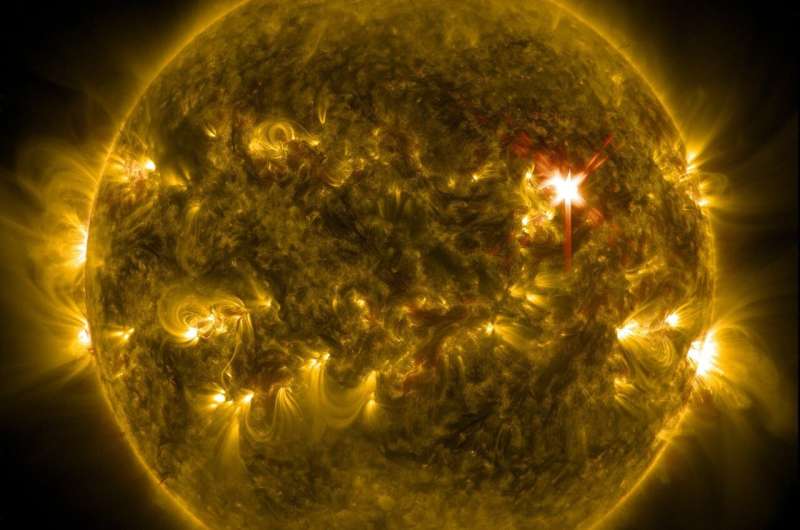"
Eruptions on the sun usually come in one of three forms: a coronal mass ejection, a jet, or a partial eruption. Coronal mass ejections—CMEs—and jets are both explosive eruptions that cast energy and particles into space, but they look very different. While jets erupt as narrow columns of solar material, CMEs form huge bubbles that expand out, pushed and sculpted by the sun's magnetic fields. Partial eruptions, on the other hand, start erupting from the surface but don't conjure enough energy to leave the sun, so most of the material falls back down onto the solar surface.
In this eruption—observed with NASA's Solar Dynamics Observatory and the European Space Agency and NASA's Solar and Heliospheric Observatory on March 12 and 13, 2016—the scientists saw the ejection of a hot layer of solar material above a magnetically active region on the sun's surface. The ejection was too big to be a jet, but too narrow to be a CME. Within a half an hour, a second cooler layer of material on the surface also started to erupt from the same place, but ultimately it fell back down as a partial eruption. Seeing an eruption with both jet and CME characteristics tells scientists they're likely caused by a singular mechanism.
With this new understanding, scientists can apply what they know about jets to CMEs. The event also tells scientists that partial eruptions occur on the same spectrum but encounter some yet-unknown limiter that restricts their energy and doesn't allow them to make it off the sun.
Understanding the mechanism behind these events, especially CMEs, is of critical importance to predicting when a large eruption might cause disruptions at Earth. CMEs in particular release large clouds of high-energy charged particles and magnetic fields that stream out across the solar system and can result in the space weather—a storm of high-energy particles and activity that can be dangerous to astronauts and technology in space and, in extreme cases, utility grids on Earth.
By modeling the new Rosetta eruption and others since discovered like it, the scientists hope they can figure out what root mechanism causes solar eruptions and determines their characteristics. Finding a trigger could ultimately allow scientists to predict when a large eruption could threaten Earth and Mars several hours in advance—providing enough time for astronauts and spacecraft operators to take precautionary measures.
The new study was presented on June 7, 2021, by Mason at the AAS 238 meeting and has been accepted for publication in Astrophysical Journal Letters.
Explore further



